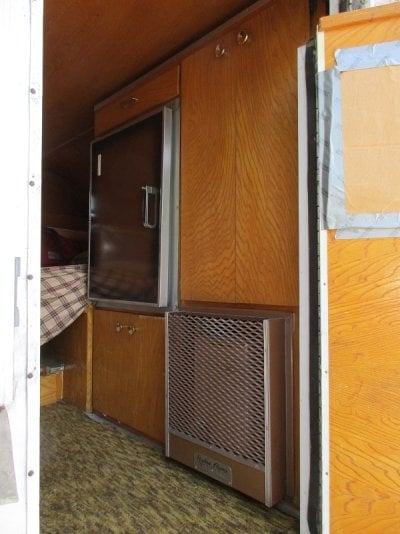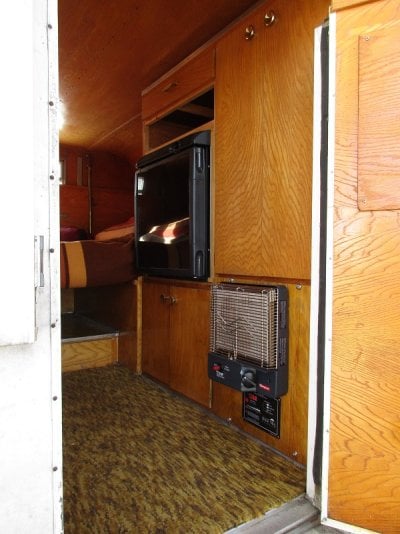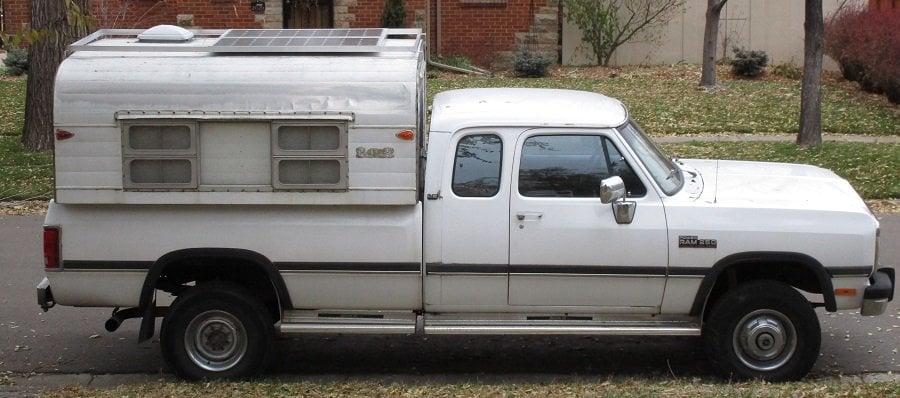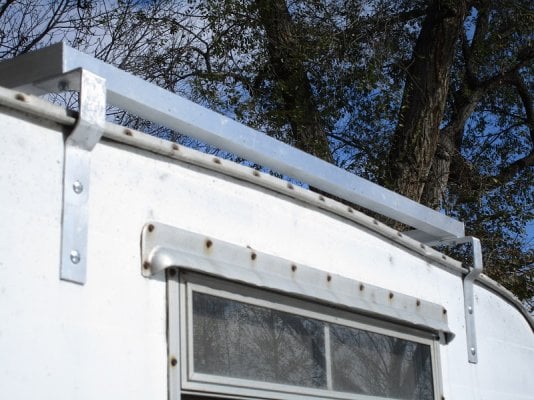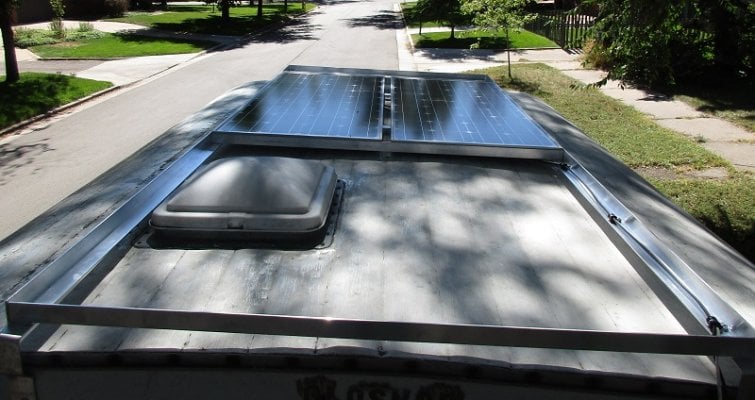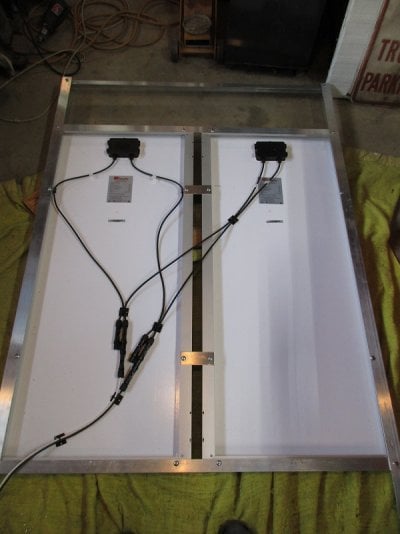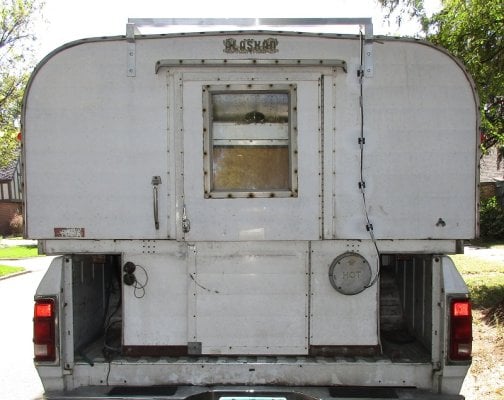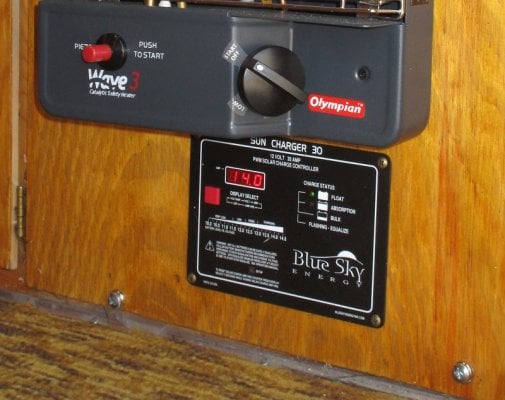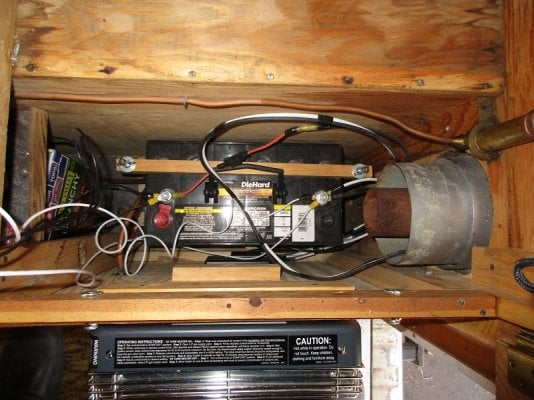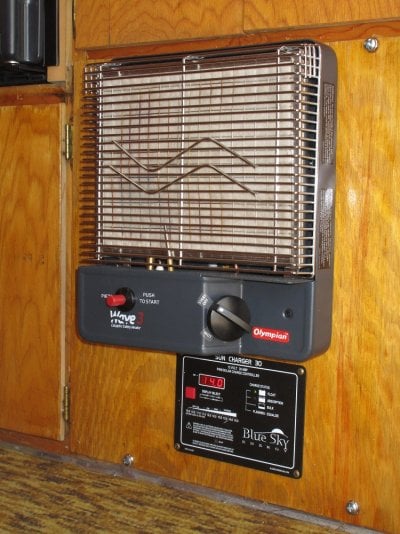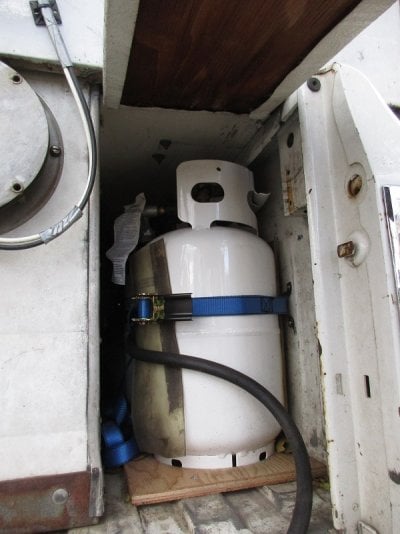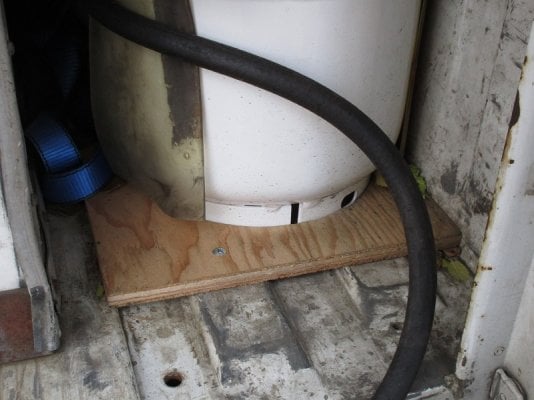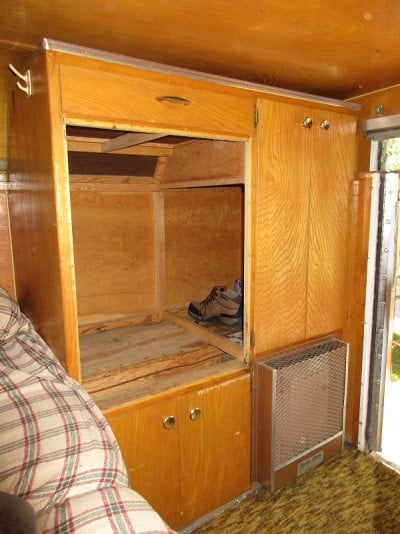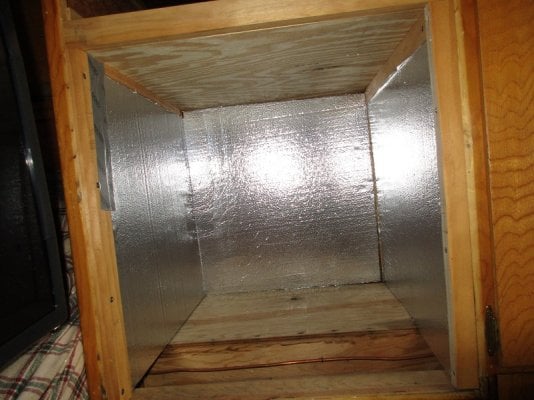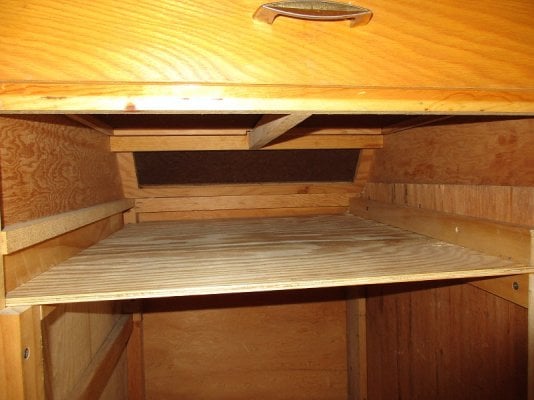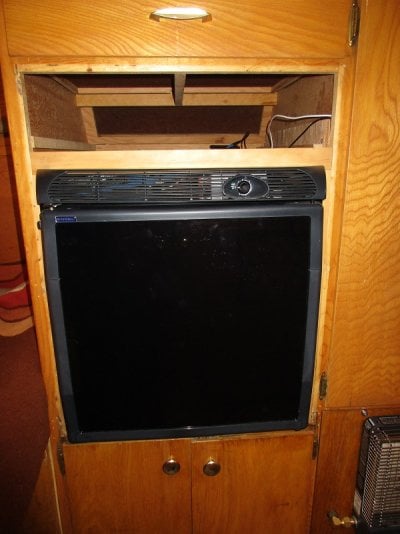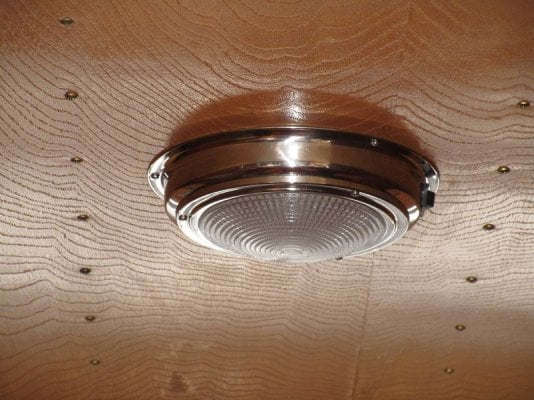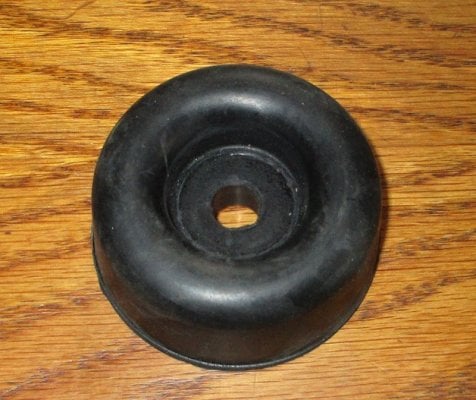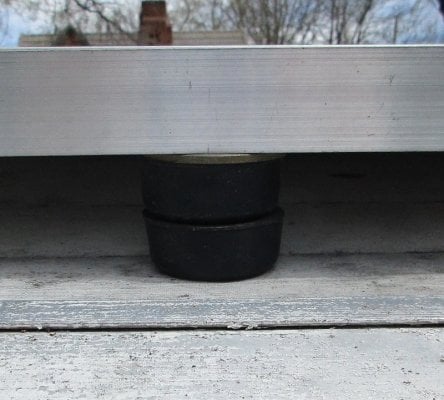Denver Alaskan
Advanced Member
- Joined
- Sep 27, 2013
- Messages
- 86
[SIZE=12pt]This past September I upgraded my 1966 8 foot long non cab-over (NCO) Alaskan camper by replacing the original ice box with a new Engel 60 quart (2.2 cu. ft.) capacity 12 volt electric built-in refrigerator, model SB 70F. To power the refrigerator, I removed the Hyrdo-Flame furnace and in its place installed a Sears Die Hard group 31M Absorbent Glass Mat (AGM) Marine battery along with two 100 watt solar panels to recharge it. [/SIZE]
[SIZE=12pt]The solar panels are installed above the roof on a custom aluminum frame mounted to new front and rear boat rack brackets copied from originals. The solar panels electric output is regulated by a Blue Sky Sun Charger 30 Pulse Width Modulated (PWM) controller. The furnace was replaced with an Olympian Wave 3 (3000 BTU) catalytic heater. In a series of posts in this thread, I will discuss the installation in reasonable but not excruciating detail. Due to forum and photograph file size limitations, the story will be told in a series of small posts. I hope you enjoy it. [/SIZE]
[SIZE=12pt]The solar panels are installed above the roof on a custom aluminum frame mounted to new front and rear boat rack brackets copied from originals. The solar panels electric output is regulated by a Blue Sky Sun Charger 30 Pulse Width Modulated (PWM) controller. The furnace was replaced with an Olympian Wave 3 (3000 BTU) catalytic heater. In a series of posts in this thread, I will discuss the installation in reasonable but not excruciating detail. Due to forum and photograph file size limitations, the story will be told in a series of small posts. I hope you enjoy it. [/SIZE]

